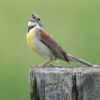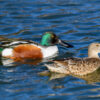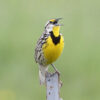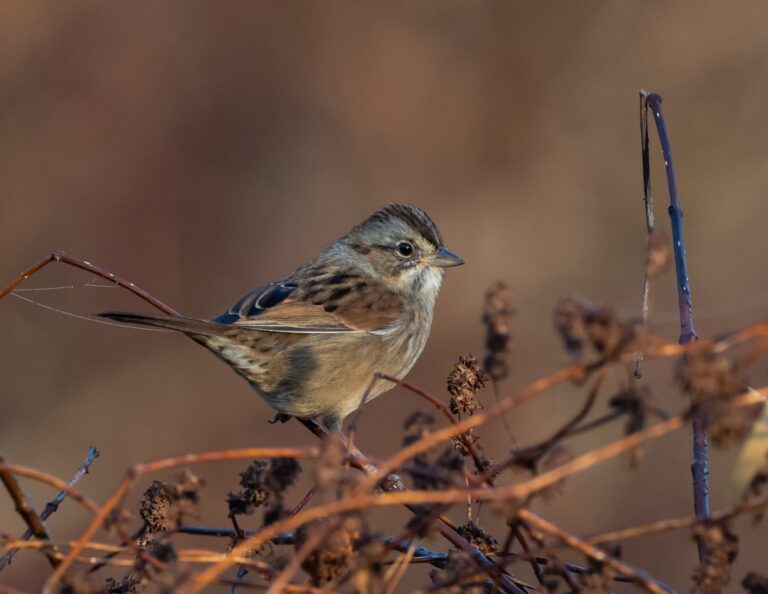
Swamp Sparrow, Melospiza georgiana
Bill Rowe
The New World sparrows, family Passerellidae, are a diverse and important part of our bird life, with 19 species regular in Missouri—some in summer, some in winter, some mainly migrants, and some year-round. The Swamp Sparrow is a common one in migration and winter, but you have to look for it in the right places. As a summer nesting bird to our north, in Canada and the northeastern states, it is limited to wetlands, from cattail marshes to moist reedy or shrubby situations of all types, where its song, a sweet slow trill, is a characteristic sound. On migration and in winter, however, in the central and southern states and down into Mexico, it occupies a broader range of habitats and may be found in any dense, tangled patch of grass or shrubs, in addition to wetlands. It belongs to the same genus as the Song and Lincoln’s Sparrows— Melospiza, Greek for “song finch”—and you will often find Swamp Sparrows together with those species (especially Song) in good numbers when you explore their weedy fields, listen for their distinctive call notes, and make some spishing sounds to pique their curiosity. With persistence, you may find ten or twenty Swamp Sparrows where at first you didn’t realize there were any at all. In terms of total continental population, they seem to have done just fine over recent decades, or even to have increased a bit; some estimates, which are always rough and tentative, run as high as 20 million.
IDENTIFICATION: Swamp Sparrows often confuse new birders, but with practice their complex blend of colors will begin to click, even in a fleeting view. Fall and winter adults and immature birds look like the banner photo above: plump medium-size sparrows, rather dark, with gray on the face, collar, and breast contrasting with rusty on the wings, buffy-brown flanks, and a small white throat patch. Breeding adults in spring look cleaner, with brighter reddish crowns, but we see relatively fewer of those. Song and Lincoln’s Sparrows have much more distinct streaking on the breast and less red in the wings, while White-throated Sparrows are bigger with a more sharply outlined white throat, bolder crown stripes, and white wingbars. The Swamp Sparrow’s year-round call-note is a sweet cheep or chink, unlike the Song Sparrow’s nasal chimp; this will often be your first clue to its presence.
ST. LOUIS STATUS: Common migrant, mostly March-April and September-November. Variably uncommon to common in winter, in habitats as described above. Only occasional in suburbs and below feeders.
Learn more and listen to the songs and calls of Swamp Sparrows here.
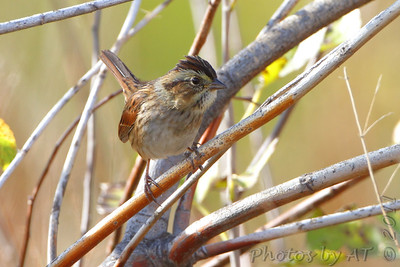
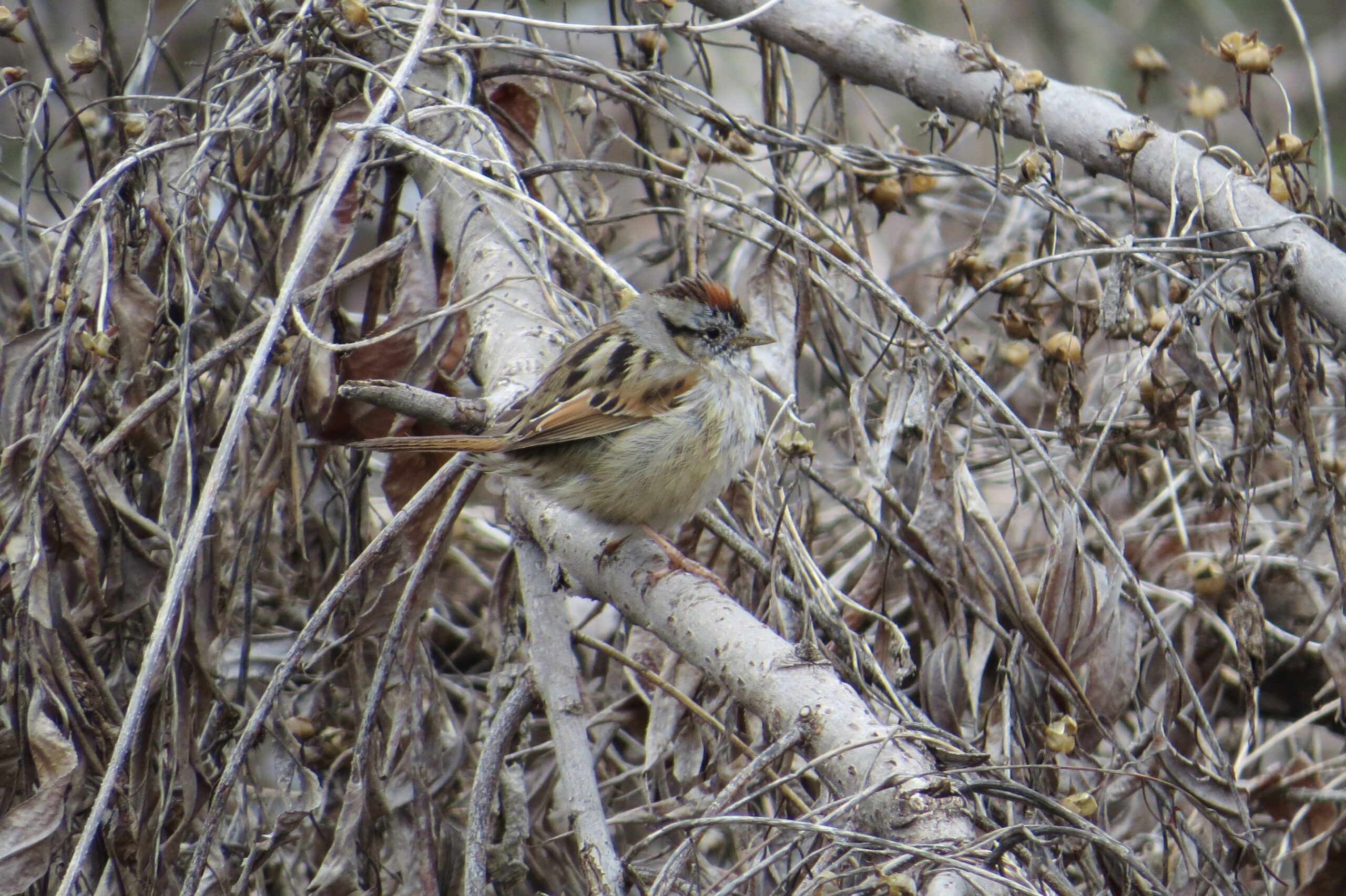
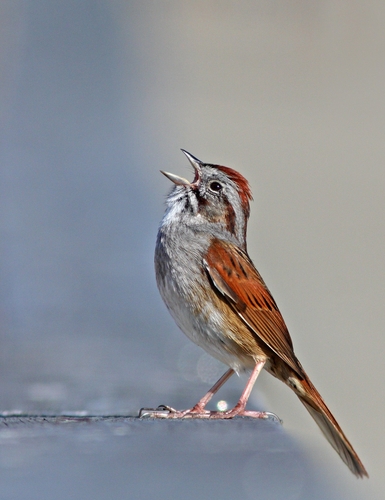
Winter/immature bird peeking at us
Photo Credit: Al Smith
Early April, molting head feathers; note red coming in on crown
Photo Credit: Bill Rowe
Singing male in breeding plumage


